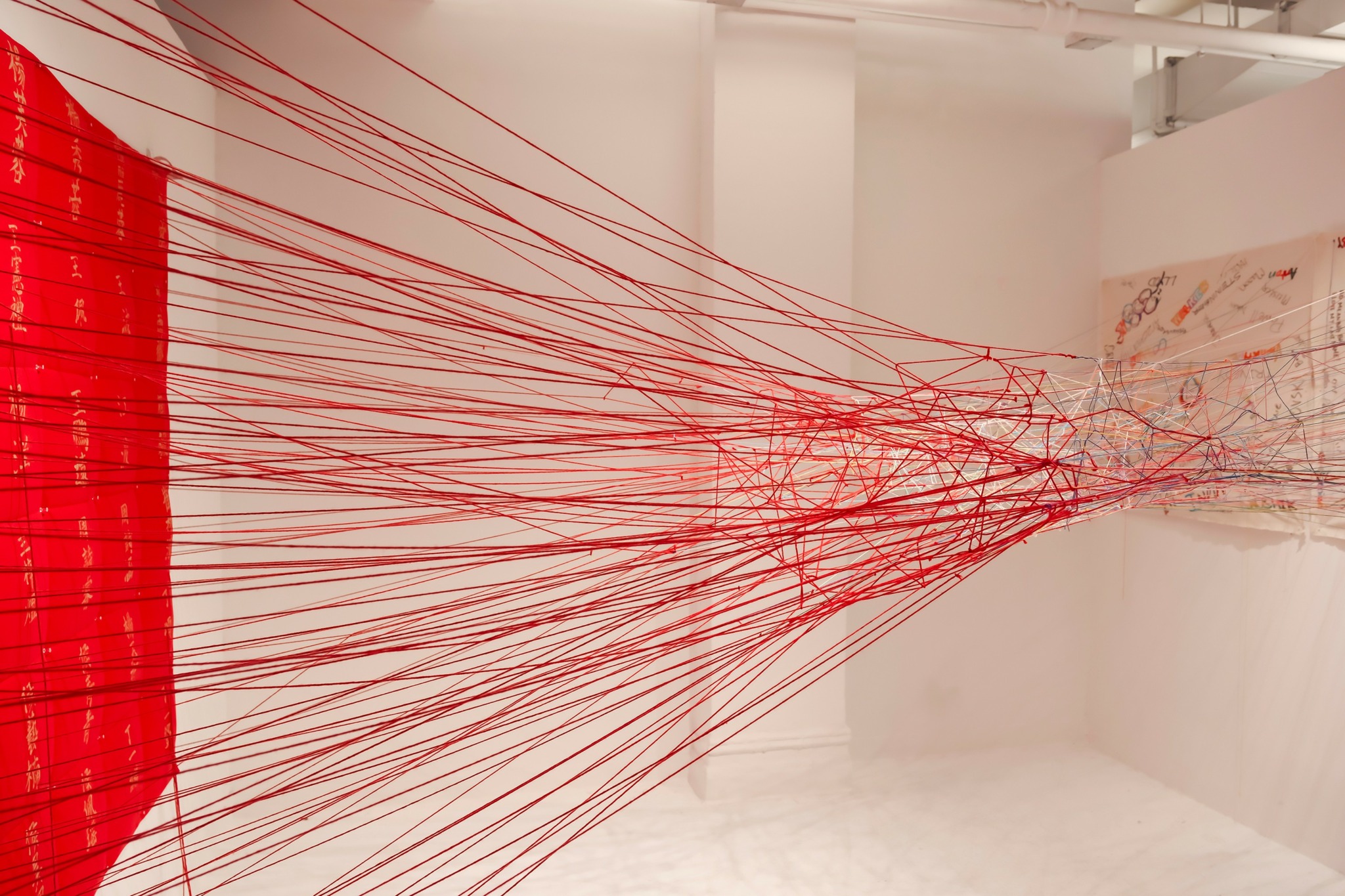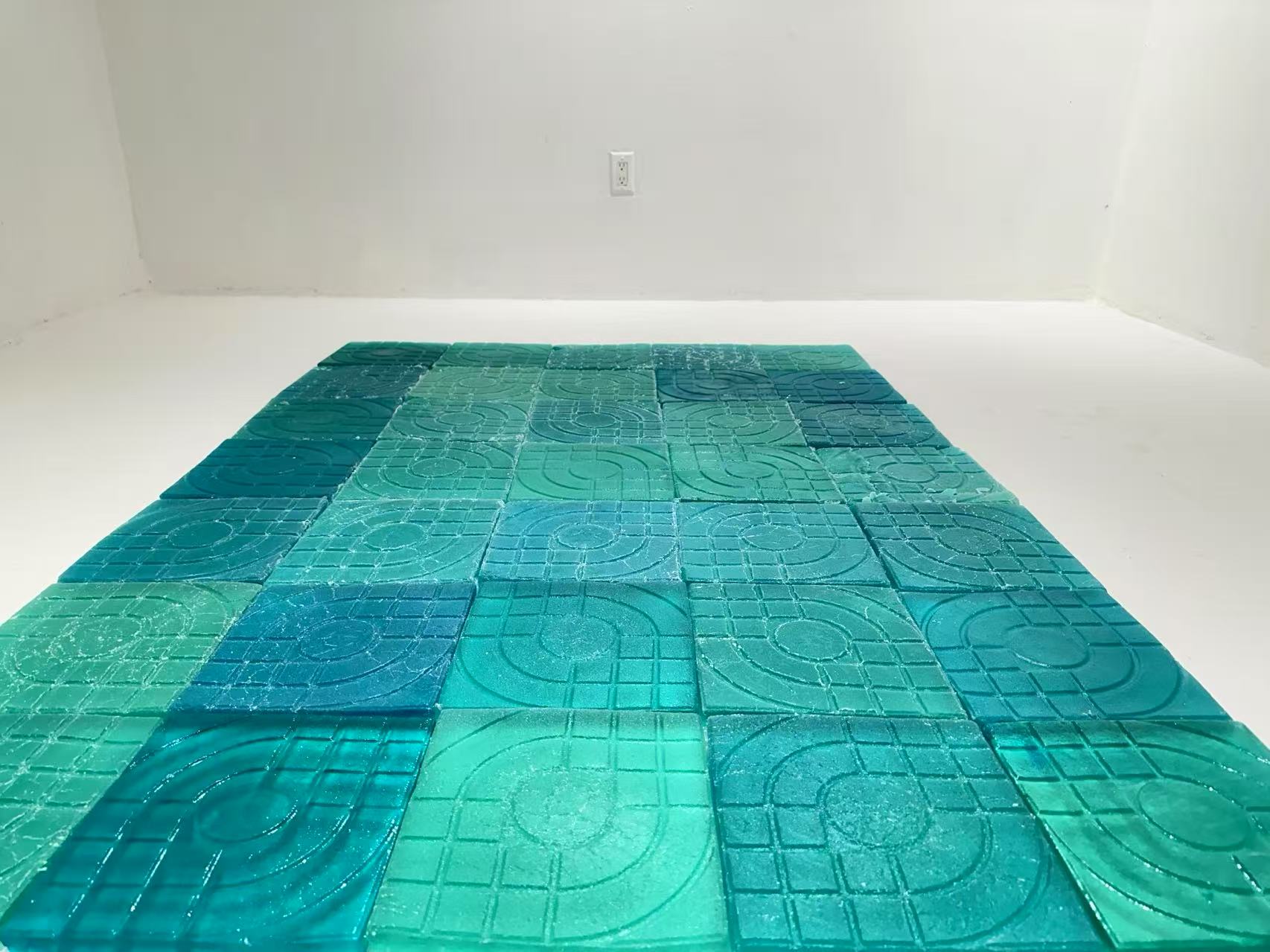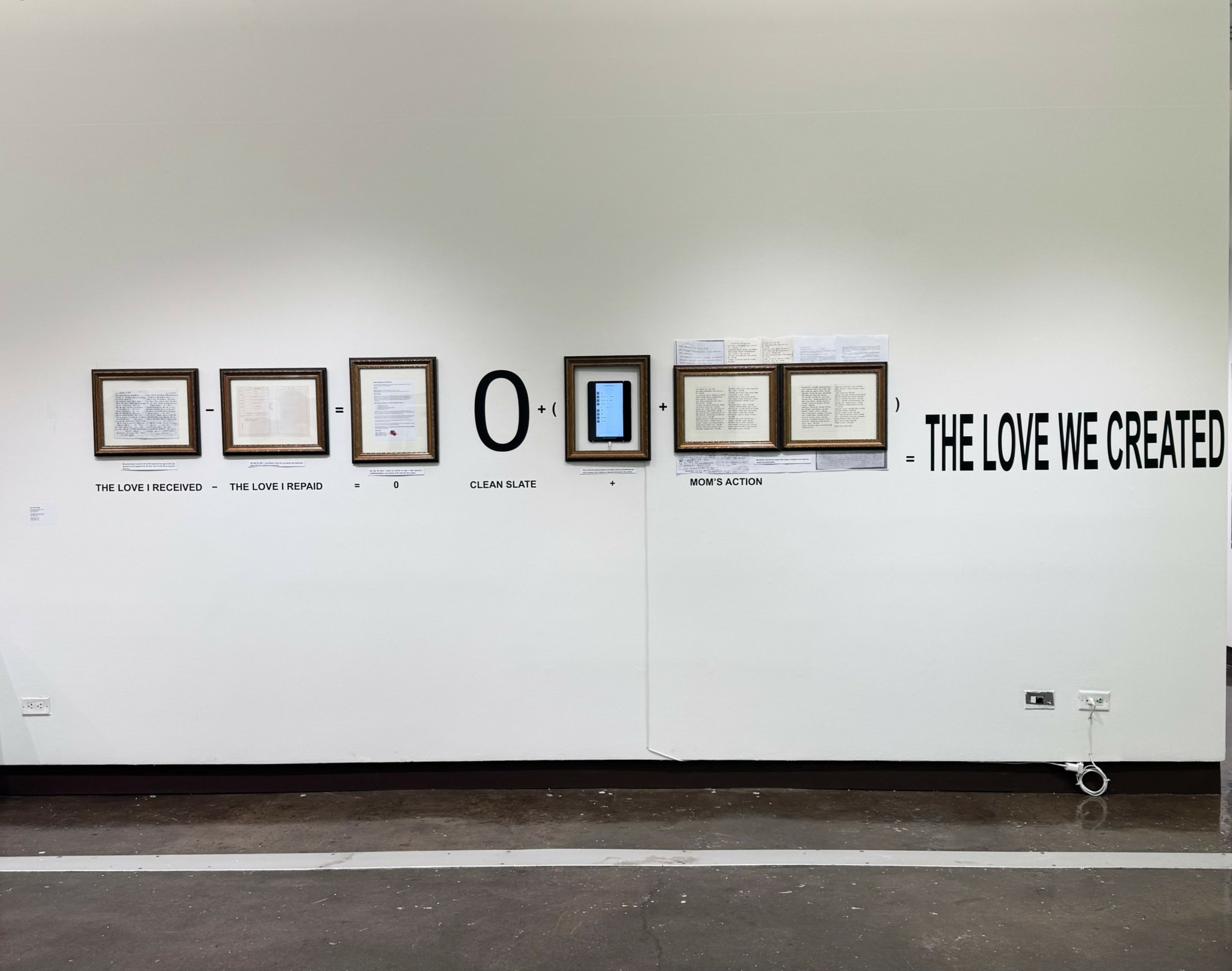We’re excited to introduce you to the always interesting and insightful Isa Yixin Yang. We hope you’ll enjoy our conversation with Isa Yixin below.
Isa Yixin, thanks for taking the time to share your stories with us today We’d love to hear about a project that you’ve worked on that’s meant a lot to you.
One of the most meaningful projects I’ve created is Sugar House.
Throughout my life, I’ve experienced frequent relocations, which has made the concept of “home” feel both elusive and fragile. I’ve often grappled with a sense of displacement, and Sugar House emerged from a deep desire to construct a feeling of home from within.
This installation is built from blue sugar tiles—materials that are physically delicate yet visually structured. The sugar symbolizes emotional vulnerability, while the color blue, drawn from my childhood living room wall, evokes conflicting feelings of calm, coldness, and familiarity. Together, they reflect the paradox of reconstructing a new family identity while still carrying the weight of past relationships and memories.
The shape of the tiles was inspired by weathered outdoor ceramic tiles from the streets of my childhood neighborhood in China during the 1990s. By using them, I wanted to blur the boundaries between public and private space—between memory and architecture.
Although sugar may appear solid, it is extremely sensitive to environmental change, easily melting or breaking. This mirrors the way identity forms—not as something fixed, but as something shaped and reshaped by pressure, conflict, and care. The tension between the softness of sugar and the rigidity of the blue pigment amplifies the inner contradictions that exist within the self.
Sugar House is not static. As viewers walk across it, the piece changes—cracking, dissolving, and reforming. Through this process, I reflect on how memory, social structures, and external forces continuously reshape our understanding of family, self, and belonging.
This work carries complex and often conflicting family memories, which is why it holds such deep personal meaning for me.

Isa Yixin, love having you share your insights with us. Before we ask you more questions, maybe you can take a moment to introduce yourself to our readers who might have missed our earlier conversations?
I’m Isa Yixin Yang, a New York-based conceptual artist working primarily in installation, sculpture, and public practice. My artistic journey began as a deeply personal exploration—one rooted in my lifelong experience of relocation and the resulting sense of displacement. These experiences shaped my ongoing inquiry into the meaning of “home,” and led me to focus on constructing an internal sense of belonging through art.
My practice centers on themes such as home, identity, family, love, memory, and spirituality. I often work with materials that change over time—such as sugar, fabric, or thread—because I am interested in transformation. These materials mirror the evolving nature of personal identity and emotional experience. My installations are typically minimalist in form but immersive in scale, inviting viewers into spaces that feel both intimate and disorienting.
What sets my work apart is its emotional vulnerability and material experimentation. I don’t just aim to express a personal story—I strive to make visible the invisible forces that shape our sense of self: cultural expectations, family dynamics, and social environments. Through my work, I explore the fragile and often interrupted process of becoming, and how identity is constantly reshaped by both memory and external pressures.
One of the things I’m most proud of is my ability to turn personal experiences—sometimes difficult ones—into spaces of shared reflection. Works like Sugar House and The Equation of Love have allowed me to confront generational patterns, emotional debt, and evolving family relationships in a way that opens dialogue with others who may be going through their own journeys of reconciliation and rebuilding.
To anyone encountering my work for the first time, I’d say: my art is about transformation—not just of materials, but of understanding. I want viewers to feel something shift within themselves, to recognize how their own identity might also be fluid, vulnerable, and in the process of becoming.

What do you think is the goal or mission that drives your creative journey?
At the core of my creative journey is a desire to build a language of my own—a way to engage in dialogue with the world that feels deeply personal yet universally resonant. Art, to me, is the freest thing imaginable. It allows me to transform intangible feelings into tangible forms, and in doing so, construct a bridge between my inner world and the external one.
Having experienced constant relocation throughout my life, I’ve often struggled with the idea of “home”—its absence, its fluidity, and its emotional weight. My mission as an artist is to explore that tension: how identity, belonging, and family are continuously shaped and reshaped by memory, culture, and place. Each work I create is both a personal inquiry and a form of communication—an attempt to make visible the invisible forces that shape who we are.
I’m drawn to materials that change over time—sugar, fabric, thread—because they mirror the way emotions evolve, how memory fades or distorts, and how self-understanding is never fixed but always in motion. Through this ever-shifting process, art becomes a form of thinking, a physical manifestation of introspection. What enters my body as lived experience is digested, transformed, and then returned to the world through my work.
So my creative mission is twofold: to understand myself more fully, and to offer others a space to reflect on their own journeys of identity, family, and belonging. Art is my way of making sense of the world—and of inviting others to do the same.

What do you find most rewarding about being a creative?
For me, the most rewarding part of being an artist is the space it creates for self-realization and emotional clarity. Art allows me the freedom to think, to observe, and to translate internal experiences into external forms. I often find myself recording fleeting thoughts or sensations as they come—these moments of self-dialogue help me better understand how my past and present shape who I am.
My creative process is deeply introspective. It allows me to process personal memories, emotional complexities, and the quiet tensions between my inner world and the world around me. Through this continuous act of reflection and creation, I feel more connected—to myself, to others, and to the broader human experience.
Many of my works are inspired by subtle observations from daily life—emotional shifts, small interactions, or lingering memories. What brings me the greatest sense of fulfillment is transforming these intimate fragments into something tangible, something others can feel and respond to. In doing so, I’m not only shaping my own visual language, but also inviting viewers into a shared emotional space.
Art, for me, is both a mirror and a bridge. It’s a way to make sense of my place in the world, and also to connect with others who may have experienced similar emotions or questions. Being able to put those feelings into form—and have them resonate with someone else—is the most meaningful part of this journey.
Contact Info:
- Website: https://www.yixinyangstudio.com
- Instagram: isayang_studio

Image Credits
Personal Photo: Nivia Hernandez
Work Photos: Isa Yixin Yang


